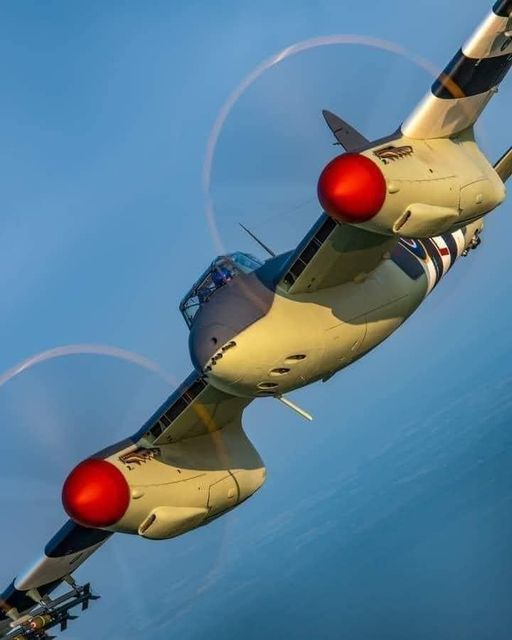The Mosquito performed daylight bombing raids over German-occupied Europe.
Apart from the Spitfire and the Hurricane, if there were ever an aircraft that epitomized the Royal Air Force (RAF) during World War Two, it would have to be the de Havilland Mosquito. As the Nazi Party in Germany continued to build up its military, the British Air Ministry was looking for a short to medium-range bomber in response.

Already having a reputation for building speedy planes de Havilland started work on a twin-engine aircraft that could outrun the enemy. Based on the company’s Albatross airliner, de Havilland believed that a bomber with a smooth minimal skin area could exceed the RAF’s expectations. Also, keeping it lightweight and built from wood would make it cheap and fast to produce.
The RAF was skeptical about a lightly armed bomber
Based on his experience with the Albatross airliner, Geoffrey de Havilland believed that a bomber made with wood could exceed the specifications that the RAF was looking for. The planemaker knew that should war break out with Germany, aluminum and steel would be in short supply while wood would still be plentiful.
De Havilland believed that by minimizing the plane’s equipment, they could build an aircraft with a top speed of 300mph. The design they settled on would be able to outrun any foreseeable enemy aircraft and would be powered by two Rolls-Royce Merlin engines. A lack of machine gun turrets simplified the aircraft’s production and reduced unnecessary drag. Contemporary RAF thinking favored heavily armed bombers with large crews, whereas the Mosquito could be flown with a pilot and navigator.
During the war the Air Ministry became more interested
Still not convinced that de Havilland was on the right track with its minimally armed fast bomber, the Air Ministry shelved the project and asked the planemaker to build wings for other aircraft. With the outbreak of war in 1939, the Air Ministry became more interested in de Havilland’s fast bomber but was still skeptical about not having the plane armed. De Havilland compromised and said he would incorporate two forward and two rear machine guns into the design.
The prototype Mosquito made its maiden flight on November 25, 1940, and by 1941 was flying faster than a Spitfire Mk II, despite being a much larger aircraft. In June 1941, the Air Ministry agreed to mass produce the Mosquito with contracts for 1,378 variants. When the plane first entered service, it was used for photographic reconnaissance.After flying a mission over Oslo, Norway, in September 1942, Mosquitos made up a fleet of aircraft used to bomb the Phillip’s factory in Eindhoven. During the proceeding year, Mosquitoes were used for daytime raids targeting factories and railways in German-occupied Europe.During the summer of 1943, the RAF used its Mosquitos to guide heavy bombers over targets in Germany. Because of the plane’s speed, they were not only a nuisance for the Germans but were impossible for German night fighters to intercept.

The Mosquito flew its last war mission on May 21, 1945, searching for German submarines in waters off the coast of Scotland. In total, between 1940 and 1950, 7,781 Mosquitoes were manufactured in the United Kingdom, Canada, and Australia.
